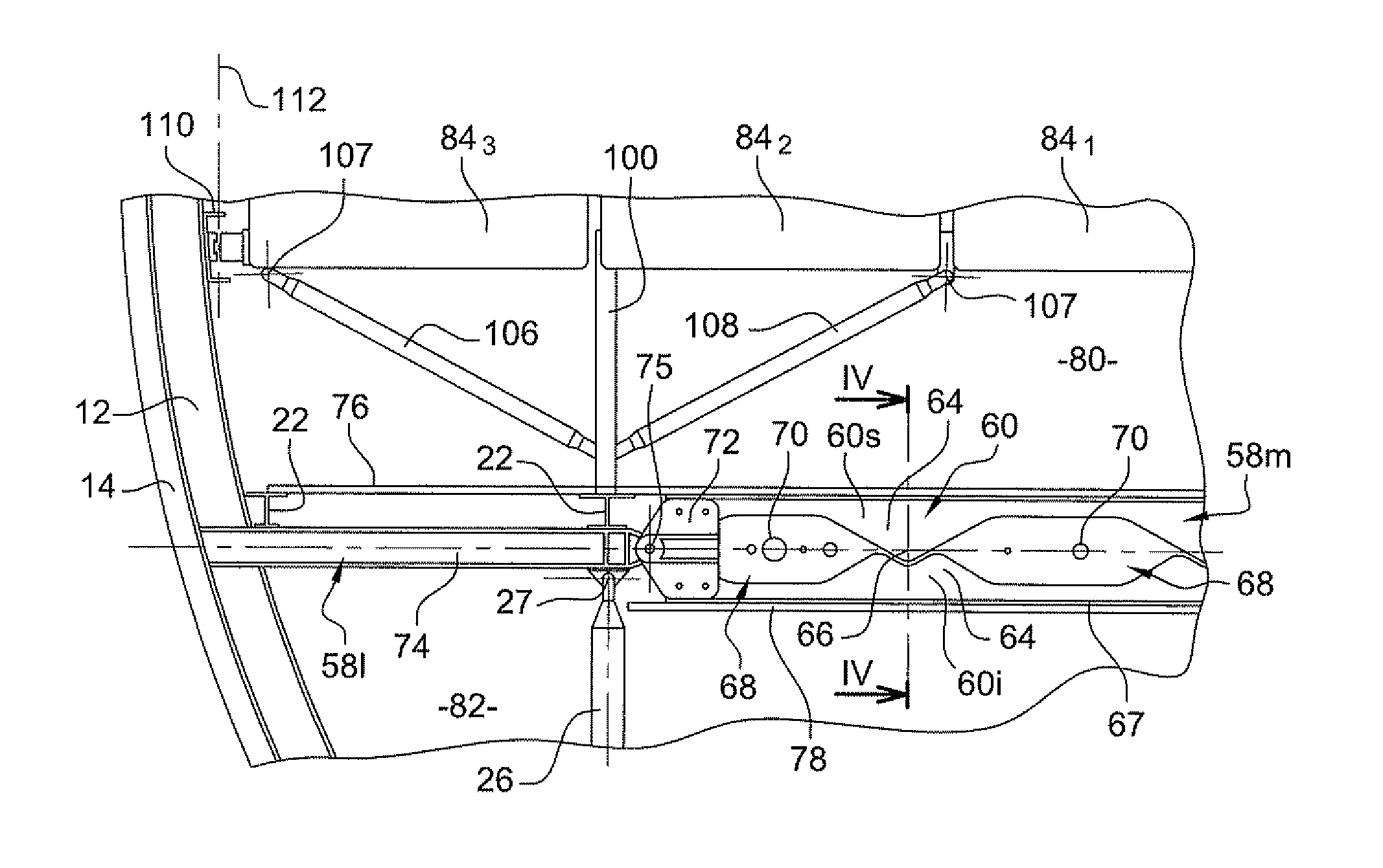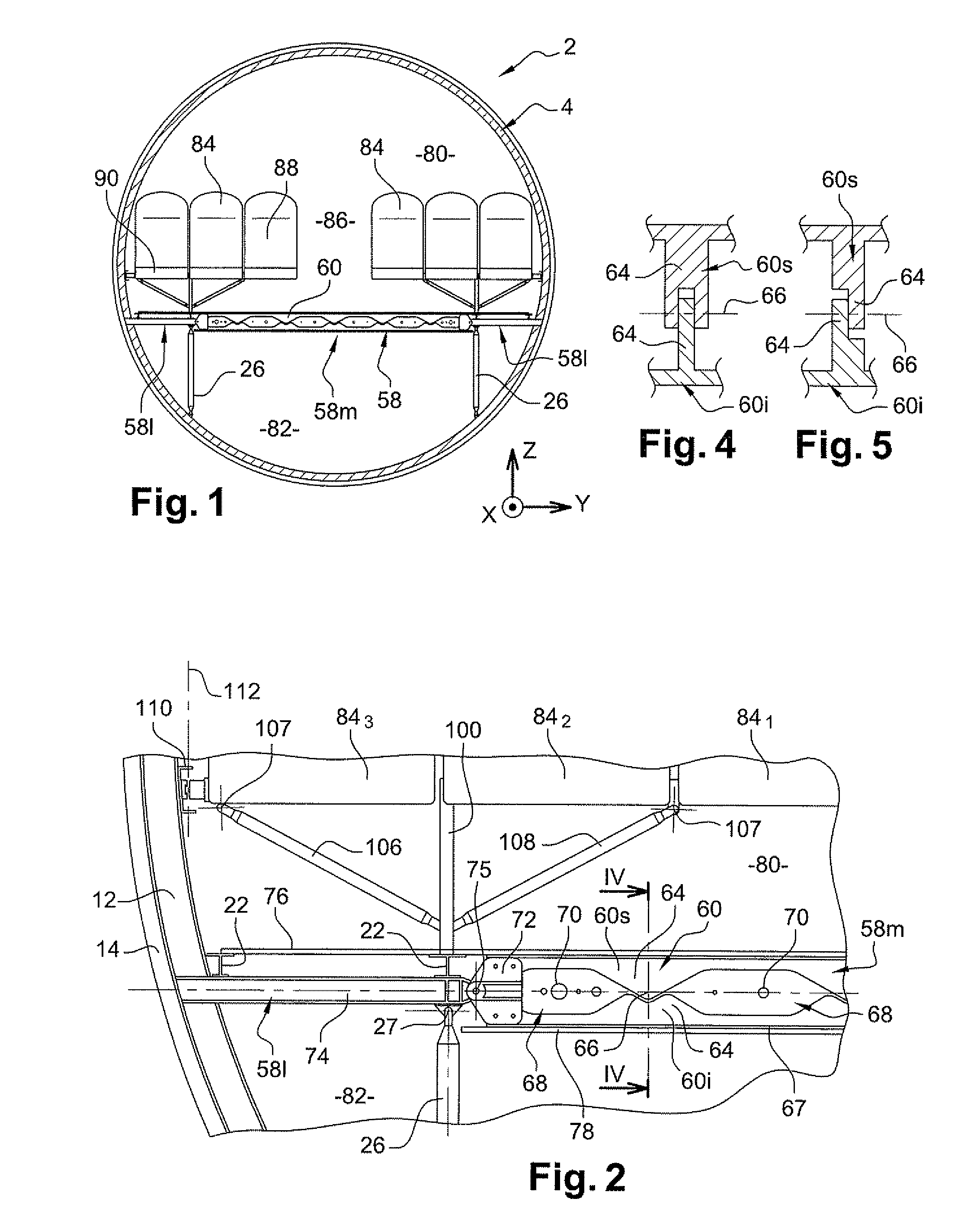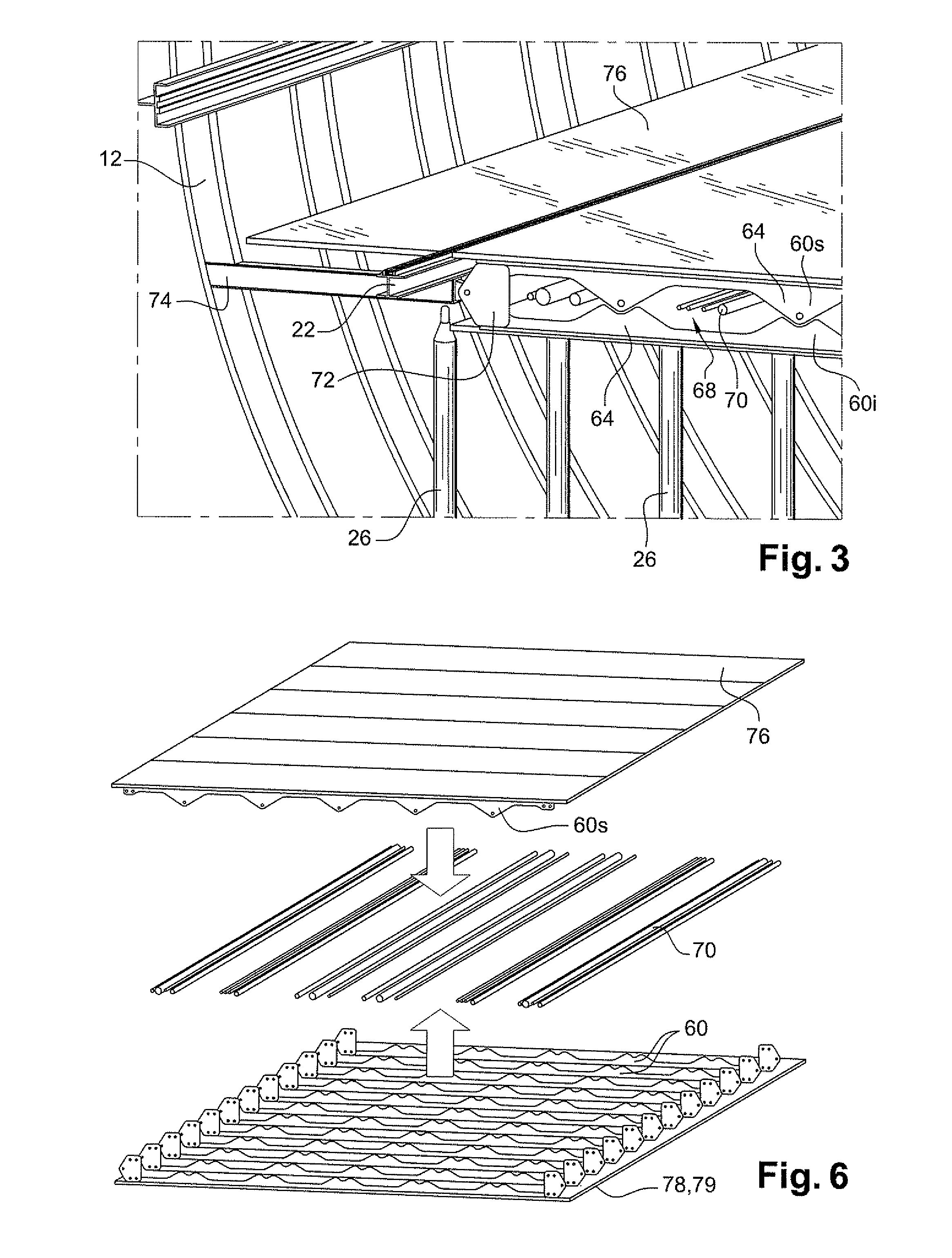Aircraft floor of optimized compactness
a technology of aircraft and compactness, applied in the direction of aircraft accessories, metal-working apparatuses, vehicle components, etc., can solve the problem that the mechanical properties of the crossmembers are not significantly modified
- Summary
- Abstract
- Description
- Claims
- Application Information
AI Technical Summary
Benefits of technology
Problems solved by technology
Method used
Image
Examples
Embodiment Construction
[0037]With reference to FIG. 1, the aircraft 2 of the invention in the embodiment described below is constituted by an aerodyne, and specifically an airplane. The airplane has a fuselage 4, two wings, a tail, and engines, specifically two engines fastened to the wings in this example. An X, Y, and Z frame of reference is used below in which the direction X designates the longitudinal horizontal direction of the fuselage, the direction Y designates the horizontal direction perpendicular to the direction X, and the direction Z designates the vertical direction.
[0038]Over the major fraction of its length, the fuselage presents a generally cylindrical shape of axis parallel to the direction X, and of section that is generally circular in a plane perpendicular to said direction. A segment of the fuselage is shown in FIGS. 1 to 3 and 7. The description below relates to this segment, it being understood that the fuselage may comprise a plurality of segments made up in the same manner and l...
PUM
| Property | Measurement | Unit |
|---|---|---|
| height | aaaaa | aaaaa |
| height | aaaaa | aaaaa |
| height | aaaaa | aaaaa |
Abstract
Description
Claims
Application Information
 Login to View More
Login to View More - R&D
- Intellectual Property
- Life Sciences
- Materials
- Tech Scout
- Unparalleled Data Quality
- Higher Quality Content
- 60% Fewer Hallucinations
Browse by: Latest US Patents, China's latest patents, Technical Efficacy Thesaurus, Application Domain, Technology Topic, Popular Technical Reports.
© 2025 PatSnap. All rights reserved.Legal|Privacy policy|Modern Slavery Act Transparency Statement|Sitemap|About US| Contact US: help@patsnap.com



